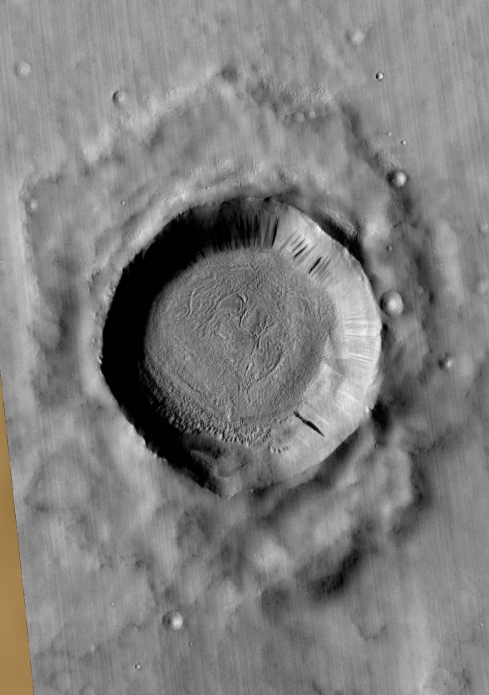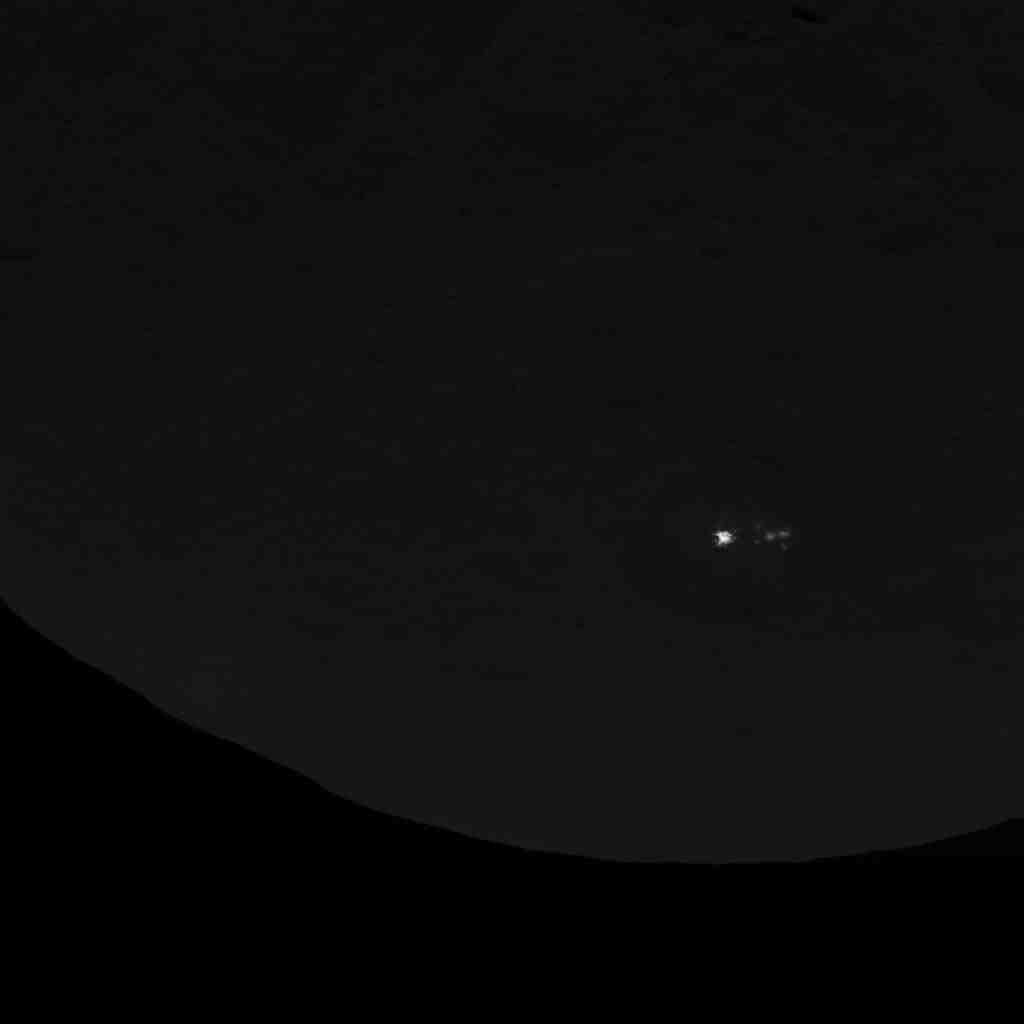It looks like you're using an Ad Blocker.
Please white-list or disable AboveTopSecret.com in your ad-blocking tool.
Thank you.
Some features of ATS will be disabled while you continue to use an ad-blocker.
share:
a reply to: smurfy
At least it has its own atmosphere .. As you say we have to be patient what Pluto may bring. Its smaller as our own moon to my knowledge?
At least it has its own atmosphere .. As you say we have to be patient what Pluto may bring. Its smaller as our own moon to my knowledge?
edit on 0b54America/ChicagoSat, 11 Jul 2015 17:37:54 -0500vAmerica/ChicagoSat, 11 Jul 2015 17:37:54 -05001 by 0bserver1 because: (no reason
given)
Im a mining engineer and have geologists at my disposal 24/7.
After inquiring with the rock lickers i was told polygons, hexagons, perfect circles are even straight lines are found in the wild everywere and space is no exception.
Crystals can form in a lot of bizaar shapes and structures that an unfamiliar person would swear was caused by human intervention. But because the geo's Mentioned the possibility of massive crystalline formations...
Im gonna go ahead say aliens.
After inquiring with the rock lickers i was told polygons, hexagons, perfect circles are even straight lines are found in the wild everywere and space is no exception.
Crystals can form in a lot of bizaar shapes and structures that an unfamiliar person would swear was caused by human intervention. But because the geo's Mentioned the possibility of massive crystalline formations...
Im gonna go ahead say aliens.
originally posted by: admirethedistance
originally posted by: 0bserver1
I've never seen these kind of structures evolve on any other planet or moon naturally ?
There are all sorts of roughly hexagonal craters on our own moon, and other moons.
The hexagonal/polygonal craters form due to existing fault lines that may exist in the surface geology of the body being impacted.
Here is a link to a paper that attempts to explain this:
Polygonal Impact Craters as an Indicator of Fracturing -- An Example from Greater Hellas Region, Mars
Excerpt:
The origin of polygonal craters:
A fractured target material is a pre-requisite for the formation of polygonal craters. Polygonal simple craters result when the excavation of the crater progresses more easily along a fracture (or some other plane of weakness) than in other directions. This typically leads to a squarish outline, with crater rims making approximately an angle of 45° with the fracture directions. However, experiments have shown that two perpendicular fracture directions can also lead to three rim orientations, i.e. a hexagonal crater. Therefore the information gained from the study of small polygonal crater rims can not be unambiguously transferred to regional fracture directions.
Polygonal complex craters are the result of slumping in the modification stage of the cratering process: the collapse of the rim takes place along some plane of weakness in the target. Thus, the dominant fracture directions in the area can be directly measured from the orientations of the straight rim segments in complex polygonal craters.
edit on 7/11/2015 by Soylent Green Is People because: (no reason given)
originally posted by: smurfy
originally posted by: 0bserver1
a reply to: smurfy
At least it has its own atmosphere .. As you say we have to be patient what Pluto may bring. Its smaller as own moon to my knowledge?
Yes, Pluto is given as its surface area, as three times the size of Texas.
And they say if every human on earth were placed into Texas it would have a population density the same as London, so....If plutonians are smaller than humans there could be Zillions of them
edit on 11-7-2015 by VoidHawk because: (no reason given)
To me some of the terrain looks the same as Triton's - the "cantaloupe" terrain it's so well known for. But it's difficult to tell what those dark
areas are. They really resemble Titan's methane lakes, so I'm hoping they're bodies of some sort of liquid. Maybe from the force Charon is exerting on
Pluto ... because if you notice, they're not on the non-Charon-facing side. But we'll find out within a week.
a reply to: xxThothxx
Methane would be frozen on Pluto rather than being liquid, as it is on Titan. New Horizons has potentially detected frozen methane on Pluto.
New Horizons Detects Frozen Methane on Pluto
Excerpt:
Several years ago, some speculation about the dark patches (based upon observations from Hubble and other instruments) was that it is frozen hydrocarbon tars, and methane would be included in those tars. The brighter patches were though to possibly be carbon monoxide frost.
Strange Spots on Pluto May be Tar and Frost
Excerpt:
Methane would be frozen on Pluto rather than being liquid, as it is on Titan. New Horizons has potentially detected frozen methane on Pluto.
New Horizons Detects Frozen Methane on Pluto
Excerpt:
“Soon we will know if there are differences in the presence of methane ice from one part of Pluto to another,” said Dr Will Grundy of the Lowell Observatory in Flagstaff, Arizona, a planetary scientists for the New Horizons mission.
Solid methane was originally detected on Pluto in 1976 by a group of Earth-based astronomers led by Dr Dale Cruikshank of NASA’s Ames Research Center, who is now a member of the New Horizons team.
Several years ago, some speculation about the dark patches (based upon observations from Hubble and other instruments) was that it is frozen hydrocarbon tars, and methane would be included in those tars. The brighter patches were though to possibly be carbon monoxide frost.
Strange Spots on Pluto May be Tar and Frost
Excerpt:
"We know there's methane on Pluto," said dwarf planet expert Mike Brown of Caltech. "Here's what we think happens: Sunlight hits the methane and breaks it apart into its chemical components ??hydrocarbons. Over millions of years this process makes a dark reddish-brown oil or tar-like substance that sticks to the ground. These darker areas spread larger as they absorb more sunlight and cause additional frost to sublimate."
The bright spots, in turn, are thought to be related to areas covered in carbon monoxide frost.
edit on 7/11/2015 by Soylent Green Is People because: (no reason given)
a reply to: Macenroe82
If those polygons are already visible from this distance and having that size, you automatically start to think "aliens perhaps? "
Just a few more days and hopefully we know by then..
Who knows maybe Pluto was an ancient moon in a goldie lock zone that collided and got slingshot to the outer rim?
If those polygons are already visible from this distance and having that size, you automatically start to think "aliens perhaps? "
Just a few more days and hopefully we know by then..
Who knows maybe Pluto was an ancient moon in a goldie lock zone that collided and got slingshot to the outer rim?
edit on 0b58America/ChicagoSun, 12 Jul 2015 01:09:58 -0500vAmerica/ChicagoSun, 12 Jul 2015 01:09:58 -05001 by 0bserver1 because: (no reason
given)
A hexagonal feature on Mars, associated with an impact crater:


edit on 12-7-2015 by wildespace because: (no reason given)
originally posted by: 0bserver1
a reply to: Macenroe82
If those polygons are already visible from this distance and having that size, you automatically start to think "aliens perhaps? "
Just a few more days and hopefully we know by then..
Who knows maybe Pluto was an ancient moon in a goldie lock zone that collided and got slingshot to the outer rim?
1000% not going to be 'aliens'.
originally posted by: Macenroe82
Im a mining engineer and have geologists at my disposal 24/7.
After inquiring with the rock lickers i was told polygons, hexagons, perfect circles are even straight lines are found in the wild everywere and space is no exception.
Crystals can form in a lot of bizaar shapes and structures that an unfamiliar person would swear was caused by human intervention. But because the geo's Mentioned the possibility of massive crystalline formations...
Im gonna go ahead say aliens.
We Humans are natural and from and part of Nature. What we make, create and build are also natural. We cannot act outside of Nature. The empire state building is a product of nature, just as an ant hill is part of nature.
It's Aliens!
It seems my sarcasm was lost on a few individuals.
No i dont not actually think aliens are responsible.
For the ones wondering, engineers and geologists have a long standing of not agreeing with each other. Its become almost comical.
Hence why i scoffed at their suggestion and came back with aliens.
No i dont not actually think aliens are responsible.
For the ones wondering, engineers and geologists have a long standing of not agreeing with each other. Its become almost comical.
Hence why i scoffed at their suggestion and came back with aliens.
No one knows whether or not Pluto has a magnetosphere. Scientists were very surprised to find that Jupiter's icy moon Ganymede had a magnetosphere because it is hard to explain how an icy body can develop a magnetic field. Nevertheless, Pluto may well have a magnetic field, as a result of its dual orbit with its moon Charon.
I wonder if there is any instrument to measure it's magnetosphere. I don't think so from what I read.
a reply to: PapagiorgioCZ
Both SWAP (Solar Wind Around Pluto) and PEPSSI (Pluto Energetic Particle Spectrometer Science Investigation) will provide such information.
arxiv.org...
www.boulder.swri.edu...
Both SWAP (Solar Wind Around Pluto) and PEPSSI (Pluto Energetic Particle Spectrometer Science Investigation) will provide such information.
arxiv.org...
www.boulder.swri.edu...
is this pic of ceres on the dark side?

dawn.jpl.nasa.gov...
hexagonal shapes are explained in The Primer Fields

dawn.jpl.nasa.gov...
hexagonal shapes are explained in The Primer Fields
Patience, patience...... we are only two days away....... I'm sure some astounding sights await from I believe around 7,776 miles
distant.
edit on 12-7-2015 by Plotus because: (no reason given)
new topics
top topics
active topics
-
Petition Calling for General Election at 564,016 and rising Fast
Political Issues • 94 • : Freeborn -
-@TH3WH17ERABB17- -Q- ---TIME TO SHOW THE WORLD--- -Part- --44--
Dissecting Disinformation • 3384 • : brewtiger123 -
BIDEN Admin Begins Planning For January 2025 Transition to a New President - Today is 4.26.2024.
2024 Elections • 59 • : WeMustCare -
DOJ Special Counsel Robert HUR Says JOE BIDEN Can Be ARRESTED After Jan 20th 2025.
Above Politics • 30 • : WeMustCare -
On Nov. 5th 2024 - AMERICANS Prevented the Complete Destruction of America from Within.
2024 Elections • 160 • : WeMustCare -
Results of the use of the Oreshnik missile system in Dnepropetrovsk
World War Three • 240 • : 777Vader -
Both KAMALA and OBAMA are on the Nov 5th 2024 Ballot - If One Loses - Both Lose.
2024 Elections • 9 • : WeMustCare -
How many people, in GENERAL, are musically inclined?
Music • 26 • : Huronyx -
Well, here we go red lines crossed Biden gives the go ahead to use long range missiles
World War Three • 395 • : annonentity -
Federal law trumps state and local law every time
Social Issues and Civil Unrest • 30 • : ADVISOR

